Diary of a Publisher: The changing face of Port Adelaide
A new book featuring photographs of Port Adelaide and its surrounds from the 1920s to the 1980s has publisher Michael Bollen feeling nostalgic as he ponders his own family’s connections to the historic suburb.

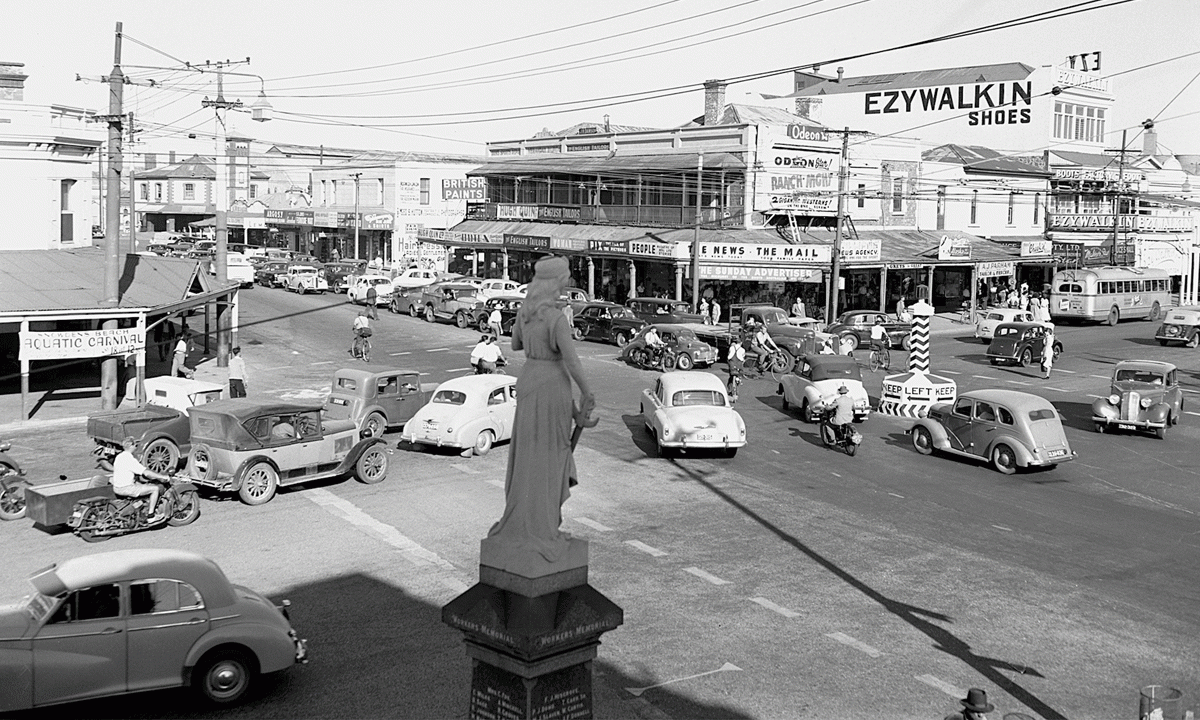
Port Adelaide's Black Diamond Corner in the 1950s. Photo: George Hutton
“I think I’m going to have to change my name,” my brother (b. 1960) emails me. “Presumably I was named after Prince Andrew. How about Eddy? I’ve always liked Eddy.”
After some back and forth, we agree on “slim Eddy” as brother Andrew’s new name – “slim” because he is indeed these days, having taken for health reasons to eating mainly, or so it seems, these little seed things.
I remind him of the day our mother won a bunch of flowers from some local TV show – hosted by Lionel Williams? – for having the closest name to Anne Boleyn, Queen of England from 1533 to 1536, before she got the chop. Mum (b. 1930) was Elizabeth, probably in honour of the recently born princess and now current Queen (b. 1926), but her middle name was Anne, or more often Annie to most who knew her.
Sometimes names come more easily.
“What shall we call her?” Port Adelaide photographer George Hutton asked the doctor who delivered his first daughter sometime in the 1950s. “Erina, after my sister,” Dr Bollen answered gruffly, and so she was. Erina Hutton (aka Erina Newnham) told me this story early in our time of working together on a book project featuring her father’s photographs of the Port and surrounds, taken between 1924 and 1984.
No surprises in Erina’s yarn. My grandfather, Ken Bollen, seems to have delivered just about every Port Adelaidean I meet of a certain age, and the word “gruff” arises with a smile during most conversations. “The rudest man in Adelaide,” my grandmother on the other side is said to have called him, while brother Andrew spreads the rumour that Ken Bollen still holds the recorded for performing the most appendectomies in a morning.
I covet his large bluestone house-cum-surgery on Semaphore Road. It doesn’t feature in the new book of magnificent images Erina Hutton has assembled, but gruffly I’ll forgive her for that.
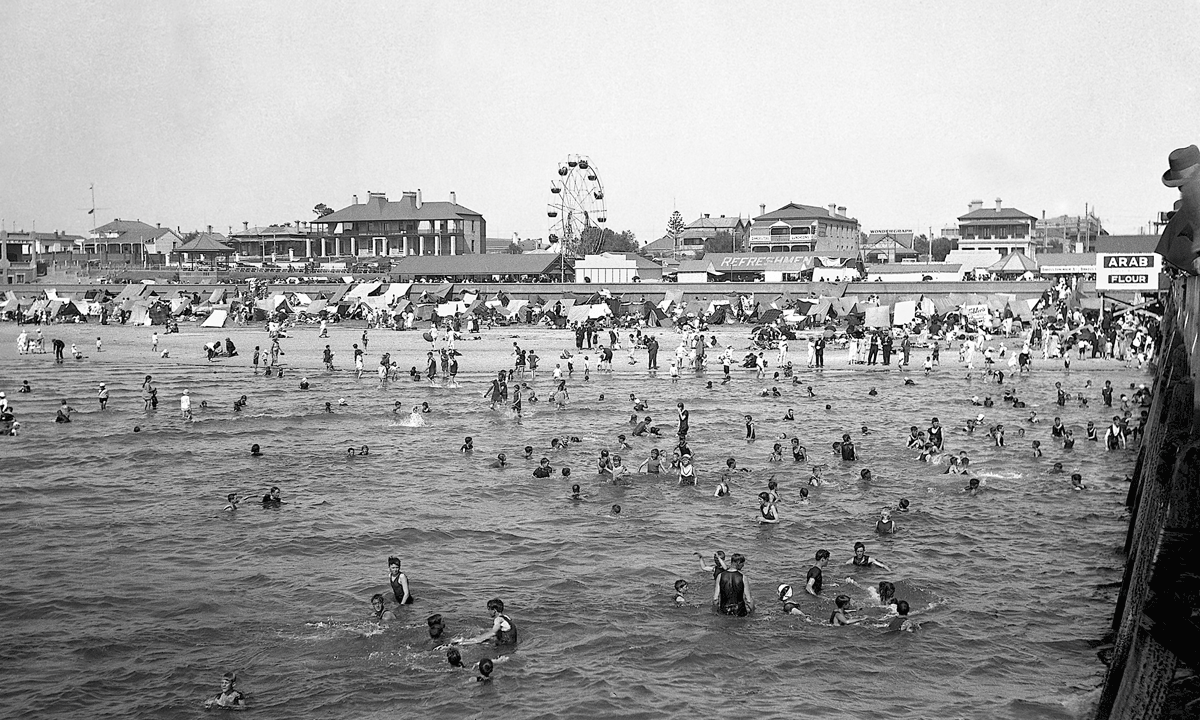
A 1920s photograph taken from Semaphore Jetty. Photo: George Hutton
In recent years, Erina has staged exhibitions at Port Adelaide of her father’s photographs and memorabilia. They have proved very popular, largely I think because they display, all at once, the Port and surrounds of earlier times, the working life of a commercial photographer across decades, and an engaging family history.
One charming image (see below) from 1950 shows Erina’s brothers, Clive and Deane (sometime co-presenter of The Curiosity Show, but why and wherefrom the second “e”?), got up as a double-headed man, winning first prize in a Largs Bay procession.
A 1920s photograph taken from Semaphore Jetty shows that once upon a time hundreds of people used to swim there, and the beach was thick with tents. I’ve always found it too long a trudge out to the water at Semaphore.
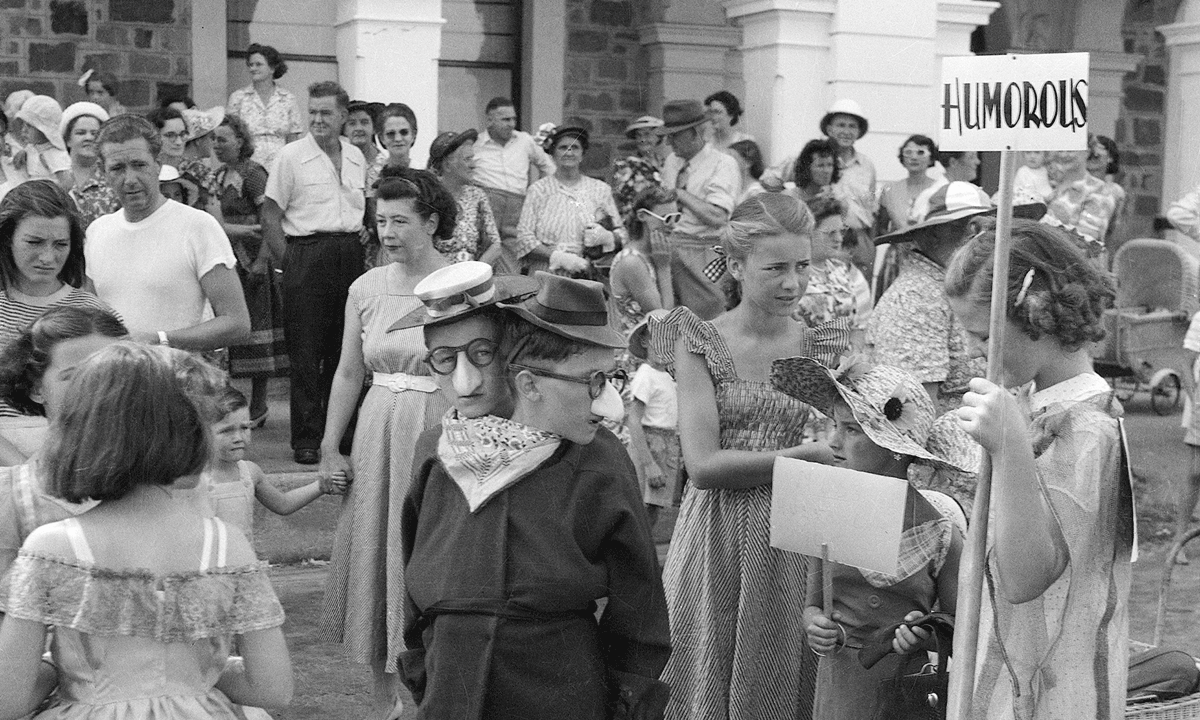
A Largs Bay procession in 1950. Photo: George Hutton
Structures, like names, like industries, come and go. We stare across water at the Colonial Sugar Refinery buildings, demolished in 1993 to make way for the ever-controversial Newport Quays. “Whither now the Port?” it’s hard not to think. Long as I can remember, it has always been touted as the next big thing for the state, just as Adelaide itself is always on the verge of becoming the world’s-best something or other, premiers falling on their swords in their efforts to prove it.
The Port, with the main city built some distance away (unlike in other states), was always going to do it tough. My father, who grew up there, liked to tell how on days after Port Adelaide football team lost a game – which wasn’t too often in his young days – knots of men used to twine around stobie poles. “Fucking umpire’s a cheat.” “Too right.”
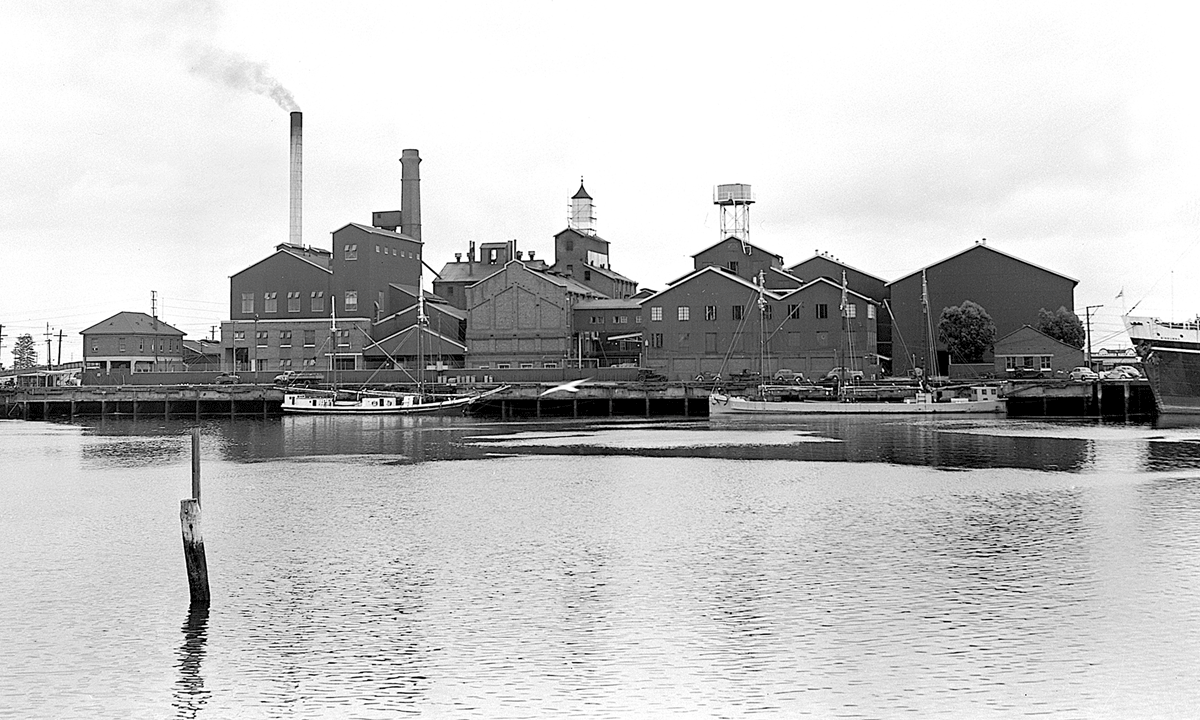
Historic Port Adelaide: Structures, like industries, come and go. Photo: George Hutton
I feel nostalgic, this Sunday afternoon, peering at George Hutton’s excellent early 1950s photo of Black Diamond Corner. Nearly need to pinch myself to remember that I’ve never yet lived at the Port – though my first real job, as a wayward youth, was at a government office in St Vincent Street, just outside the frame of this picture, next to the inaptly named Hygienic Fish Shop. I was first on the bus at the top of Glen Osmond Road, then many times fell asleep only to wake with a driver’s nudge at Semaphore, end of the line. “Sleepy-head” was one of the kinder names my manager used.
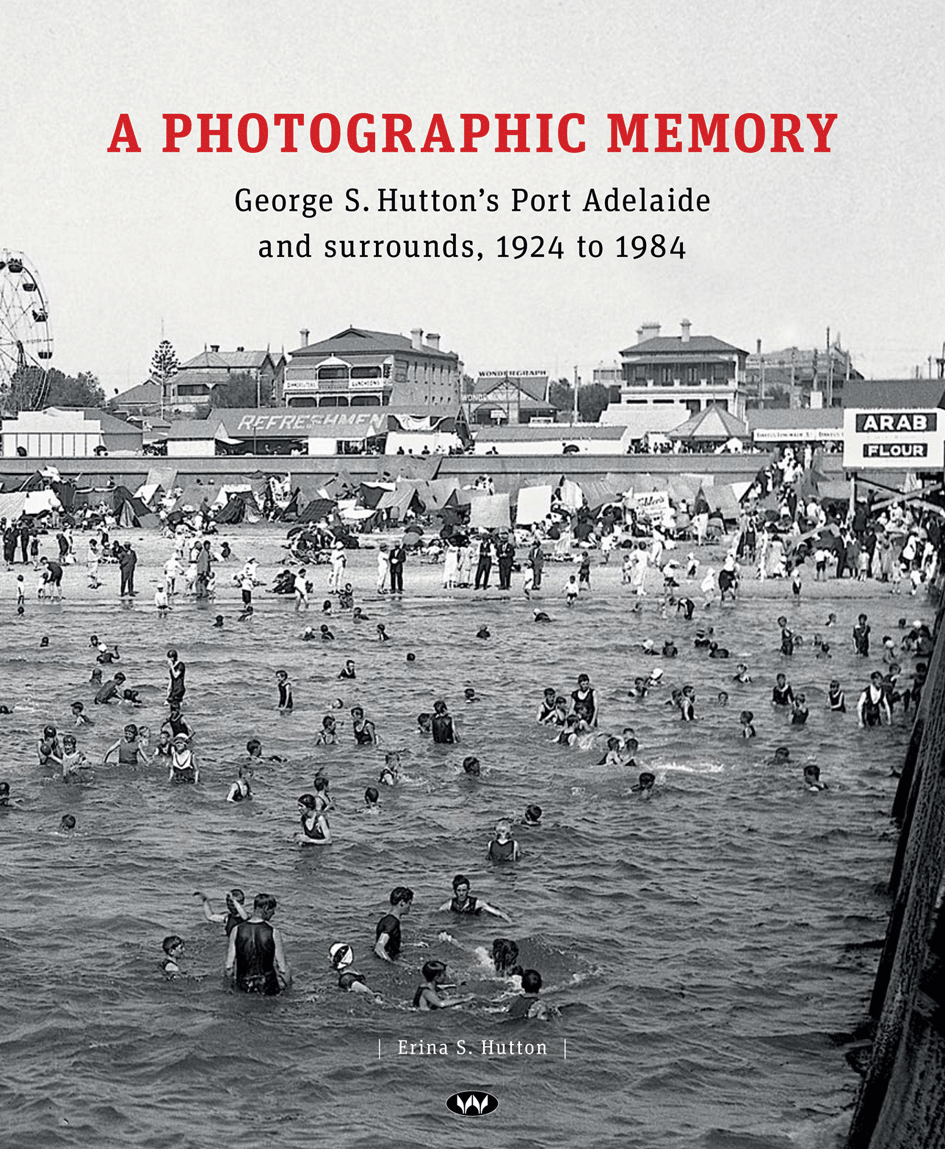 But no more time for reflection now. “Giddyup Dobbin,” I tell myself. “Up and at ’em is the name of the game.”
But no more time for reflection now. “Giddyup Dobbin,” I tell myself. “Up and at ’em is the name of the game.”
The Wakefield Press caravan rolls on next Friday evening to the Semaphore Library for the launching, accompanied by a small exhibition, of Erina Hutton’s A Photographic Memory: George S. Hutton’s Port Adelaide and surrounds, 1924 to 1984. Love to see you there.
Michael Bollen is director at Adelaide-based independent publishing house Wakefield Press. He writes a fortnightly column for InDaily.




